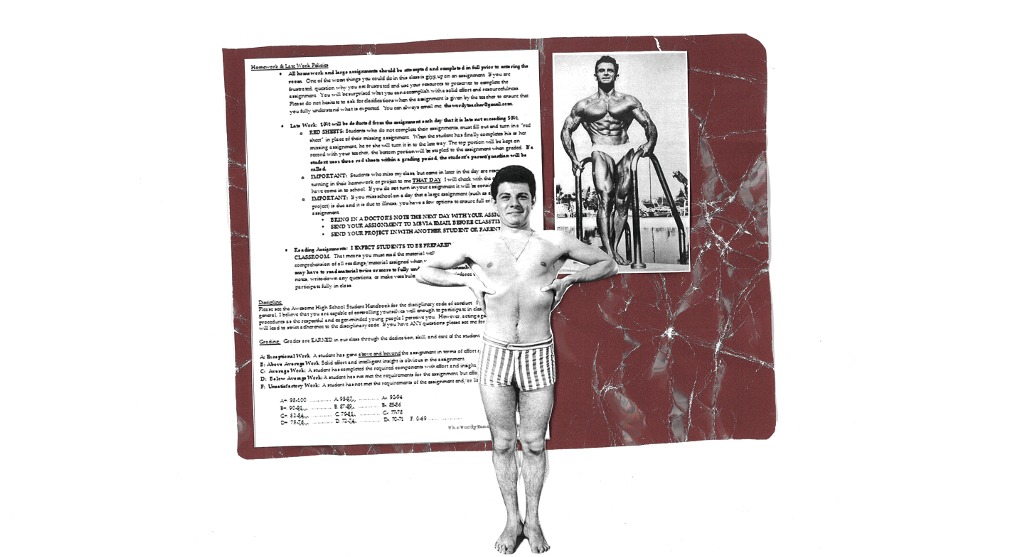Once upon a time, aspiring meatheads had limited options when it came to muscle-building literature.
They could read Joe Weider’s line of fitness magazines (Muscle & Fitness, Flex and Men’s Fitness), which mixed useful tips with heavy-handed pitches for Weider products (weight gainers, weight gloves and weight sets). They could talk to the veteran lifters at their local gyms, in the hope that they’d be given proper instruction about form and performance-enhancing drug use. Or, if they really wanted to commit themselves, they could relocate across the country to a bodybuilding mecca, such as Gold’s Gym in Venice Beach, and learn at the feet of meathead masters such as Vic Tanny and Jack LaLanne.
Unfortunately, none of these were options for me. First, I lived in the middle of nowhere, 20 miles from even the nearest magazine rack. Second, I was a slop-bodied tub lord who harbored dreams of heavy lifting but resided in a body forged by summers of heavy gaming and heavier junk-food binges. Then, when I was 12, I inherited a copy of Bill Pearl’s Getting Stronger from my college-bound older brother.
The book featured a picture of Pearl, the aging but still-massive bodybuilding champion, on the cover and loads of useful, if somewhat misguided, advice between the covers — particularly as it pertained to breathing. Not to mention, even though the book contained tons of exercises, most were variations on a handful of signature bodybuilding movements, such as a million different types of the bicep curl (swinging “cheat” curls, hammer curls, concentration curls, isolation curls, EZ-bar curls, wide-grip barbell curls, alternating curls, palms-up curls and cable curls on a universal machine, to name just a few).
But I had to start somewhere, so I started there. The rest of my literary education in lifting happened gradually. Only in retrospect did it take the shape of a syllabus, a process that more or less coincided with my body taking the shape of an experienced lifter’s. Over time, I had gone from soft and squishy to hard and dense, right down to my thicker bones and my protruding calluses. And while my brain didn’t bulk up accordingly, it did get pumped full of bodybuilding lore, legend and learning thanks to the books below — a true master’s course in physical culture.
Part I: The Inescapable Arnold
First up were Arnold Schwarzenegger’s The New Encyclopedia of Modern Bodybuilding (1985) and Arnold: The Education of a Bodybuilder (1977). The New Encyclopedia of Modern Bodybuilding is a useful enough work, with a richly-illustrated section on the history of physical culture that was just about all I knew until I pursued that subject in greater detail in graduate school.
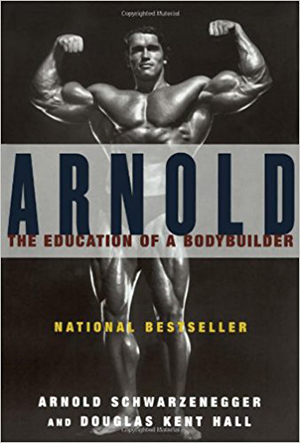
It seems unlikely that Arnold wrote most of the text — co-author Bill Dobbins probably deserves the credit and criticism for that — but the New Encyclopedia’s nutrition advice (eat thousands of calories), recommended exercises (do lots of reps) and demonstration photos (which feature some of the top bodybuilders of the 1980s comically trying to properly front-rack weight with their hypertrophied T-Rex arms) have all aged somewhat less than gracefully.
Arnold: The Education of a Bodybuilder might be the autobiography that launched a million bodybuilding careers, but in retrospect, it’s a heavily bowdlerized, ghostwritten story that provides a basic overview of budding egomaniac Schwarzenegger’s career in muscle and little else. Bodybuilding star Bob Paris, author of a much better memoir that appears below, says that Education of a Bodybuilder was the only “muscle” book he read cover to cover, but even then, he “read it as a quasi-propaganda piece and poorly ghostwritten at that.”
Folks looking for a better understanding of the young Schwarzenegger would be better served to watch him in 1977’s Pumping Iron, where he salvages the otherwise-tedious — if homoerotically campy — documentary by overacting the role of an unbeatable douchebag.
In contrast, writer Charles Gaines and photographer George Butler’s original book Pumping Iron: The Art and Sport of Bodybuilding (1972) is a revelation. Though it gave rise to Butler’s movie, which centered largely on Schwarzenegger and his mock-rivalry with Lou Ferrigno, the original book is a masterwork, with stark black-and-white photos by Butler of a number of early 1970s stars and a series of interesting interconnected essays by Gaines. It was, in fact, Gaines who coined the term “pumping iron,” noting that an acquaintance of his in Alabama was fond of using the colorful term “iron” as a metonym for “barbells and dumbbells.” Gaines’ 1972 novel Stay Hungry (made into a film starring Schwarzenegger and Jeff Bridges) was probably the best fictional treatment of the subject until another Southern novelist, Harry Crews, wrote about an aspiring female bodybuilder in his trippy 1990 book, Body.
Part II: Formal Investigations
By my mid-20s, I was trying to fix all of the movement inefficiencies and strength imbalances that resulted from a few half-hearted stabs at taking the bodybuilding stage. The first book I read in that vein was Mark Rippetoe and Lon Kilgore’s Starting Strength, then in its second edition but now in its third. Rippetoe, a highly opinionated trainer who has made occasional sallies into the world of red-pillers, had equally strong opinions about the back squat (low bar, if you please!) and deadlift (conventional stance, not sumo). The book was long-winded in extremis, much like Rippetoe at one of his seminars, but it had the happy effect of curing major movement dysfunctions in my squat, where my knees were an absolute mess, and in my power clean, where I simply hadn’t developed the proper biomechanical pathways for front-racking weight.
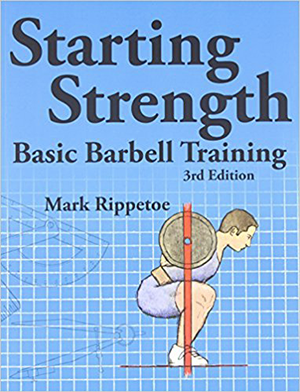
But if I’m being honest here, readers looking for similar powerlifting advice coupled with easy-to-implement programming advice would be better served to check out Jim Wendler’s 5/3/1. Wendler, once a supersized powerlifter, had dropped tons of weight and improved his overall health by streamlining his strength programming into a system for beginning and intermediate trainees that operated on a progressive sequence: a week with 3 sets of 5 reps; a week with 3 sets of 3 reps; a week with sets of 5, 3 and 1 rep; and a “deload” week. My best progress as a powerlifter occurred while following 5/3/1 to the letter.
Wendler’s treatise will probably “meat” the needs of aspiring meatheads, but two other books warrant notice, too. The information about rest and intensity found in Mike Mentzer’s High-Intensity Training is useful (very condensed summary: rest a heck of a lot, and make the handful of reps that you do choose to lift as intense and perfect as possible). And I’d be remiss if I didn’t mention Dan John’s work, including Intervention: Course Corrections for the Athlete and Trainer, which gave me a better sense of what I was trying to accomplish in the gym.

Of course, in terms of overall movement mechanics, there’s nothing as good on the market today as Kelly Starrett’s Becoming a Supple Leopard, a well-deserved bestseller that turns the reader’s attention toward such simple but necessary mechanical issues as properly screwing your feet into the ground, sitting in a braced neutral position to avoid lumbar pain at work and a million other little tweaks. The book also provides great information about powerlifts, body-weight movements and Olympic lifts.
And for those looking to take the true next step, there’s Dan Duchaine’s Underground Steroid Handbook, a work of biochemistry light years ahead of anything else when it first appeared in 1981. Subsequent authors such as Anthony Roberts (Anabolic Steroids: Ultimate Research Guide) and William Llewellyn (Anabolics, currently in its 11th edition) have added to Duchaine’s research on performance-enhancing drugs, but such authors stand on the shoulders of a gone-before-his-time giant — Duchaine. Nevertheless, users looking for anabolic solutions would be well-served to consult a knowledgeable coach or physician to ensure that they don’t turn into some kind of tragic recreational user like the late Rich Piana.
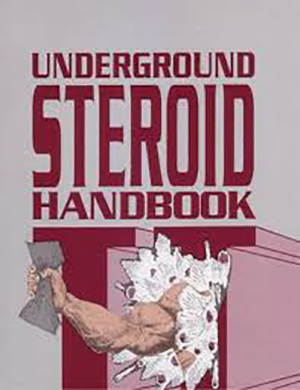
Part III: Body Image Problems
The reason I began lifting was because I was fat. There’s nothing wrong with being fat, and at 235 pounds, I’m far from svelte even today. I came from a family of fat people, 300 pounders to a man and woman, and they were all strong as hell. I really didn’t want to be weak — weakness was mocked by these 300 pounders, even if fatness was regarded as acceptable/desirable — and it was this compulsion that drove me to the gym.
At the time, I had no sense of vanity, and no real understanding of my body in the world. I wore baggy T-shirts and baggy Jnco pants; who could say what weighty secrets hid underneath? And yet, I suppose I was trying to become attractive. Susan Bordo’s The Male Body: A New Look at Men in Public and Private (2000) covered a lot of this ground in far more exquisite analytical detail than I could ever hope to bring to the subject, and Lynne Luciano’s Looking Good: Male Body Imagine in Modern America (2002) offered a fitting historical accompaniment to Bordo’s more literary criticism-oriented approach.
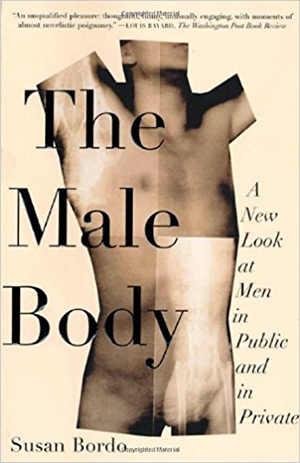
The best personal account of a body-image crisis came in the form of Samuel Fussell’s Muscle: Confessions of an Unlikely Bodybuilder (1991). Fussell, the son of legendary literary critic Paul Fussell, responded to a sudden rush of urban insecurity — like many New Yorkers of the Bernie Goetz era, he had an irrational fear of being mugged — by casting off his Ivy League and ivory tower persona. Suddenly in possession of a modest inheritance from his grandparents but with no real master plan in mind, he drifted into bodybuilding and steroid use, first as a curious novice at a New York gym, and later, as a promising, Zubaz-pants clad meathead bound for the muscle mecca that is L.A.
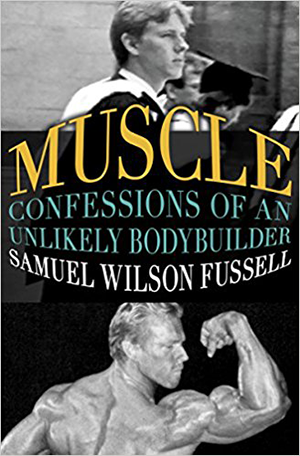
Muscle is a phenomenal book, gripping in its exploration of the author’s deep, inexplicable loneliness and competitive failures. Despite packing loads of mass on his previously frail frame, Fussell comes up short at both a bench-press competition and a low-level bodybuilding show. These failures underscore his contempt for Schwarzenegger’s better-living-through-bodybuilding model: Like most of us, Fussell had no desire to be great, only to remain hidden from the world, and when he decided to stop hiding, he lost his will to discipline his body with exercise.
“Everything I’d done for the last four years had been an effort to keep the world at bay, to find a place in which I wouldn’t have to react or think or feel,” he wrote regarding his transformation from muscle zero to muscle hero. “Because as big as I’d gotten and impressive and imposing as I looked ‘standing relaxed,’ I felt that if you could somehow find a chink in my armor and pry apart a muscular pauldron from a gorget, you’d find nothing within that vast white empty space but a tiny soul about the size of an acorn.”
Fussell had gotten close enough to grasp the truth of this world, but — perhaps to his credit — he lacked the fortitude to continue. Bob Paris, by contrast, was among the sport’s rising stars throughout the 1980s, a fixture on the covers of Muscle & Fitness and Flex and a top contender at several Mr. Olympia contests. He looked beautiful, spoke eloquently and appeared destined to follow in Schwarzenegger’s footsteps by crossing over into other media. Except he, too, eventually decided he didn’t want it, a renunciation chronicled in his memoir Gorilla Suit: My Adventures in Bodybuilding (1995). Like Fussell’s Muscle, it’s the tale of a life partially devoted to bodybuilding, but it also follows Paris before and after he exploded onto that scene. “I fought against that subtitle,” he tells me. “It wasn’t just a bodybuilding story; it was about coming of age, as a catawampus outsider, who looked on the surface like a total insider.”
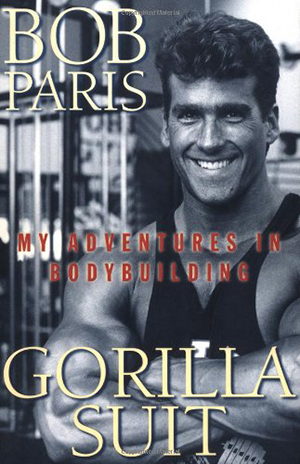
Also like Muscle, Gorilla Suit is the fruit of a single author’s mind: It’s the only such ghostwriter-free memoir written by a competitor of Paris’s caliber. “He’s the only writer on bodybuilding who doesn’t lie for a living,” Fussell wrote in a review of Gorilla Suit, referencing the “kayfabe,” or willfully fictional, tone of much of the rags-to-riches motivational material that’s constituted the sport’s literature since Eugen Sandow, the first supposedly perfectly built man of the 20th century, sold impressionable boys on the benefits of a salubrious, abstemious lifestyle he not only didn’t follow but openly flouted.
Despite excelling in the classroom and on the football field in rural Indiana, Paris had an unhappy home life and a fraught relationship with his father. “I hated myself; that simple,” he wrote. “My limbs were all in the wrong places, my teeth were weird, the hair on my head from outer space, the hair sprouting on my chest embarrassing. And I was a fag.” Or as he explains to me, “What’s the old saying? ‘Show me a bodybuilder and I’ll show you a guy with dad issues.’”
If it’s men and women with “dad issues” that one is looking for, look no further than Alan Klein’s Little Big Men: Bodybuilding Subculture and Gender Construction (1993), which devotes an entire monograph-length treatment to their travails. Anthropologist Klein fashioned a composite study of life at a bodybuilding gym, studying the goings-on of lifters prostituting their likenesses and their actual bodies to pay for their steroid use. This venerable book is also starting to show its age, lumping all these people into the Susan Faludi-esque category of hyper-manly cartoon people responding to a crisis in masculinity, but many of the observations remain sound.
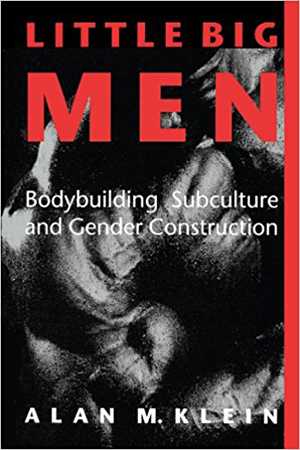
The same could be said of author Paul Solotaroff’s frequently anthologized 1990 Village Voice article “The Power and the Gory,” which also focuses on the seamier side of the sport. “Gory” follows ex–Mr. America Steve Michalik, an abused boy who grew up to become a heavy steroid user, as he goes on a wild, drug-fueled ride from the top to the bottom of his profession — and back again. The article is gripping: Who wouldn’t want to read about horned-up bodybuilders attempting to have sex with Coca-Cola machines or running out into traffic to face down approaching cars? But it also seems exaggerated, at least from my perspective as an actual performance-enhancing drug user, and the story is shoehorned into a conventional redemption arc that ends with a clean-living Michalik repenting for the error of his ways. (Spoiler alert: he committed suicide in 2012.)
Readers interested in a truly sad tale of a failed bodybuilder would be well-served to read the late Joanie “Chyna” Laurer’s autobiography If They Only Knew. Released in 2001 to capitalize on her fleeting pro wrestling fame, the book tells the story of a super-sized amateur bodybuilder who dated abusive men, finished last in fitness pageants, spent hours staring in the mirror and obsessing about her jutting jaw, got scammed out of a bodybuilding trophy by a competitor, had a father who stole $40,000 in student loans from her and got bounced from the Peace Corps. The book seemingly ends on a happy note, with Laurer briefly established as a WWE star, but it’s about as sad a bodybuilding read as one will find anywhere.
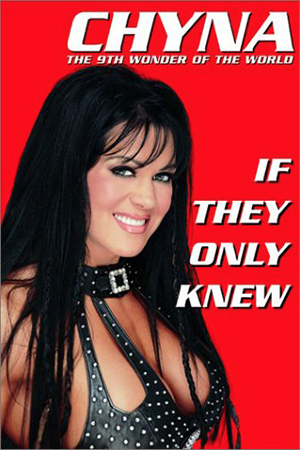
Part IV: History and Tradition
As I’ve gotten older, I’ve become interested in how the gym serves as a repository of history as well as a place of practice. Each barbell lift we perform connects us with a long tradition of people who performed that lift before us, much as how each pose we strike in the mirror calls to mind, however imperfectly, the great bodies of yore.
Although it weighs in at a whopping $100 price point, author Randy Roach’s self-published two-volume Muscle, Smoke and Mirrors (2008) remains the best comprehensive history of physical culture as well as one of the best self-published books available on any subject. Nearly everything pertinent to physical culture is covered across its 1,000-plus pages, and while there are plenty of typos and other stylistic quibbles, the book is such an awesome resource that you’re more than happy to overlook them.
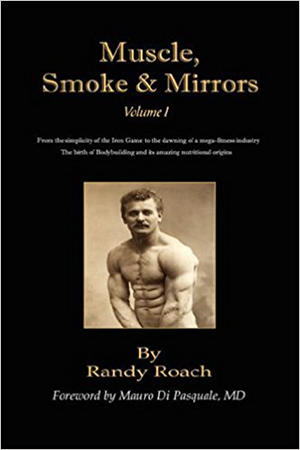
History professor John Fair’s two major books on strength sports, Muscletown USA: Bob Hoffman and the Manly Culture of York Barbell (2008) and Mr. America: The Tragic History of a Bodybuilding Icon (2015), cover a lot of specialized ground. Muscletown USA looks at York Barbell magnate Bob Hoffman’s dominance of weightlifting culture in mid-century America, and Mr. America takes us through the early days of muscle pageantry before Joe Weider’s International Federation of BodyBuilding seized control of the sport in the 1960s. Weider’s signature Olympia pageant and the bodybuilders who starred in it is the subject of Gordon LaVelle’s Bodybuilding: Tracing the Evolution of the Ultimate Physique (2011), which takes the story of professional bodybuilding deep into the 21st century.
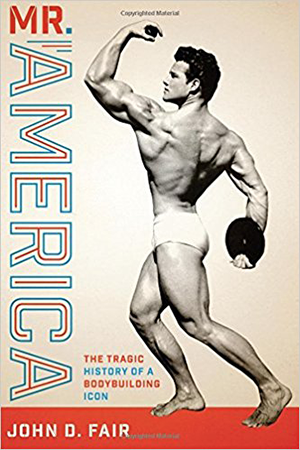
As far as pure picture books go, David Chapman and Brett Grubisic’s American Hunks (2009) features excellent black-and-white and color reprints of some of the best male physique photography, covering a time frame ranging from the Civil War until Schwarzenegger’s emergence as a bodybuilding icon. (Chapman’s Universal Hunks (2013) promises a similar treatment of bodybuilders around the world, but I’ve yet to peruse it.) And the omnibus edition of Tom of Finland’s beefcake comic imagery, Tom of Finland XXL (2009), which features essays by John Waters, Camille Paglia and Armistead Maupin, is a must-have, if exceptionally NSFW, coffee table book.
Pumping Iron author Charles Gaines’ charming little illustrated Charles Atlas biography, Yours in Perfect Manhood, Charles Atlas (1982), offers a nice stopping point, at least temporarily, for any self-taught course in physical culture. Gaines focuses on how Atlas transitioned from perfectly-built immigrant posing champion to American fitness entrepreneur through an examination of Atlas’ “Insult that Made a Man out of Mac” cartoon advertising campaign. The cartoon depicted an undersized pubescent male deciding to try Atlas’ patented “Dynamic Tension” isometric course so that he could gain the strength needed to beat up a bully and impress his sweetheart.
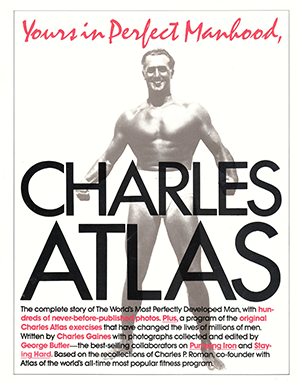
For young men growing up in the 1950s and 1960s, Atlas’ leathery torso, leopard-spotted bathing suit and aging matinee-idol visage were inescapable. He gleamed at them, the very picture of virility, from the backs of their comic books and pulp magazines. There, they would read about impossibly hard men doing impossibly hard things; Atlas tantalized them with the promise of their own bully-beating hardness, merely a postage stamp away.
It’s this process of transformation into something new, something better, that still tantalizes all of us. With the right mixture of sets and reps, we too might become so big that people would hear us coming long before they ever saw us. But as Paris and Fussell realized in their own transformation tales, our most desirable state of being will always remain a postage stamp away. Instead of being born anew within cocoons of musclebound manhood, we will simply remain ourselves, albeit older and wiser — heirs to a fertile tradition of bodybuilding that doesn’t end until we no longer have bodies to build.
